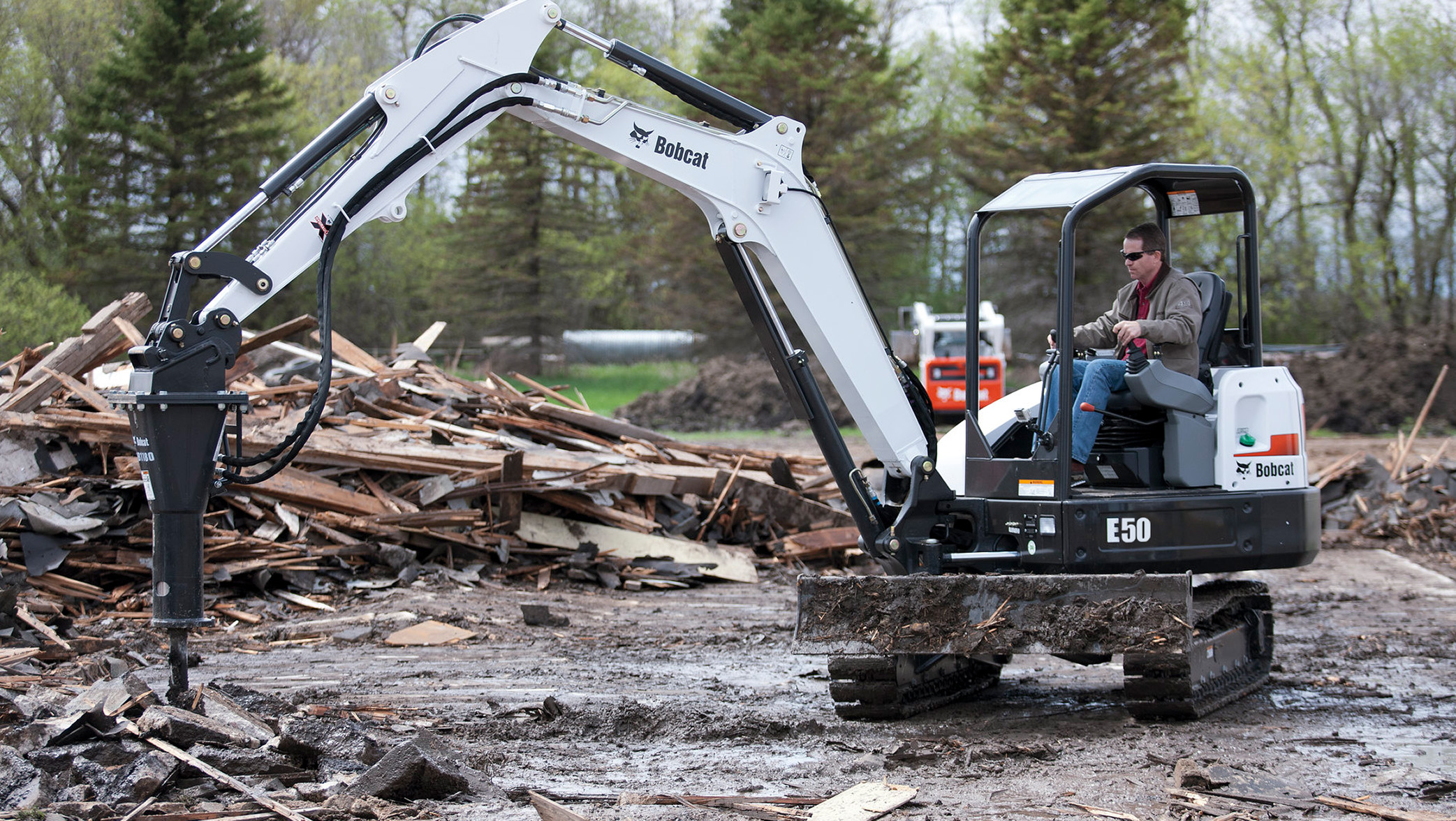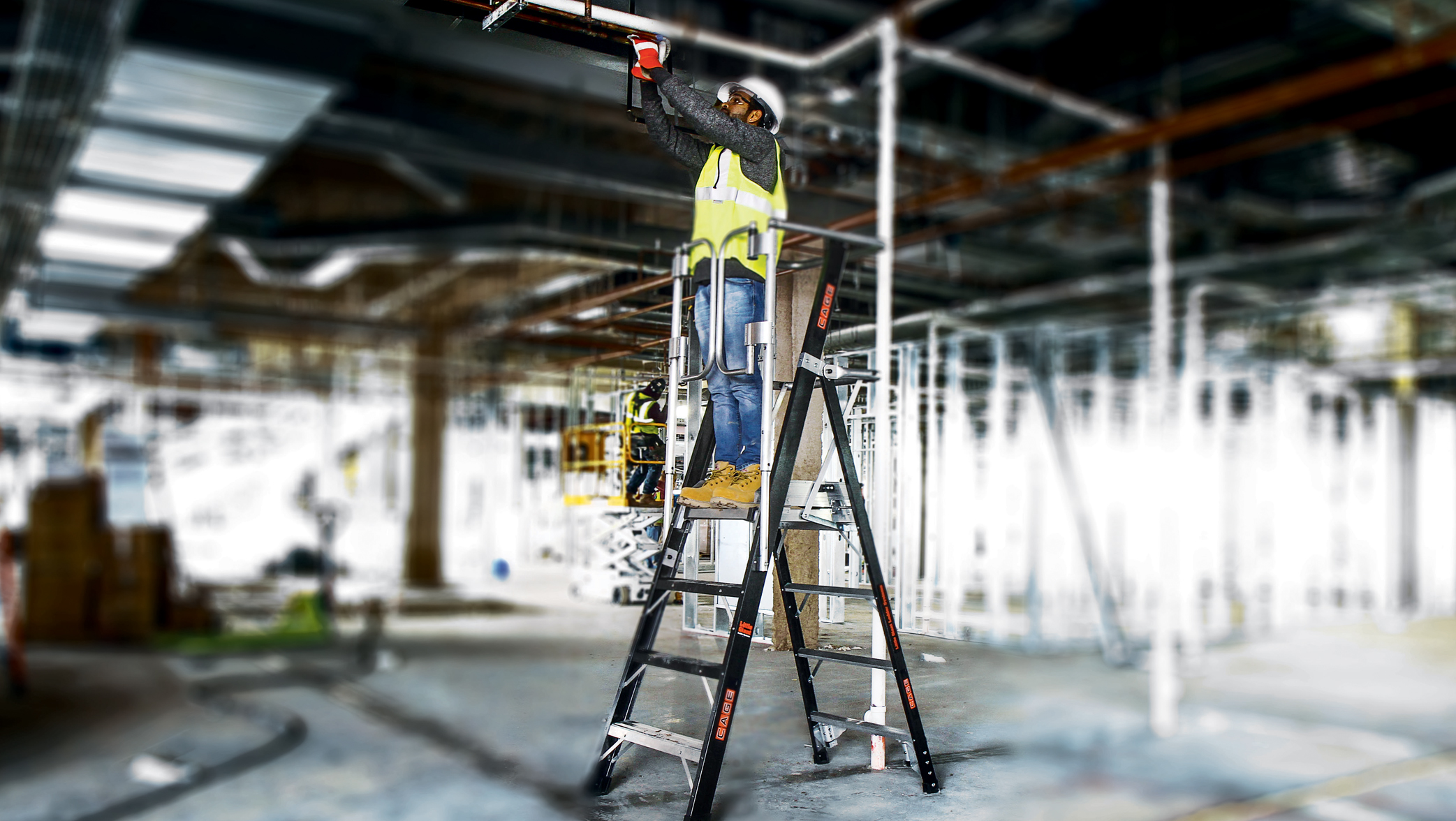No matter what industry you’re in — construction, facility maintenance, mining, utilities, public works or something else — wicked winter weather can wreak havoc on the equipment you use and impact your daily work schedules.
It doesn’t have to be that way. Whether it’s freezing temperatures, rain, ice, snow, or slush, there are things customers can do to ensure their rented equipment is operating at maximum efficiency and their jobsite productivity remains unimpeded during the year’s coldest months.
MAINTENANCE NOW
Get a start on your pre-winter inspections and equipment maintenance before the season kicks into high gear. Two easy areas to focus on include your vehicle tread and equipment batteries.
In wet and wintry weather, all-season tires begin losing traction long before they appear to be worn out, according to recent studies (Dec. 5, 2021 Consumer Reports). When driving in inclement weather, it’s important to have adequate tread depth on vehicles. Without it, vehicles won’t be able to grip snow-covered pavement or adequately disperse slush and accumulating water.
According to the studies, the impact of not having proper traction (less than 4/32 of an inch) in snow is significant, with acceleration falling nearly 14 percent and stopping distances increasing by 7 percent when compared to the same tires with full tread depth.
(ProTip: While checking treads on vehicles and equipment, why not take the time to ensure your equipment, steps, entryways and walkways are affixed with grip stickers or have non-slip surfaces?)
After examining tire tread, the next thing on maintenance checklists should be battery life on work trucks and other equipment. Cold weather and the elements can negatively impact the way equipment performs. In freezing temperatures, batteries lose about 32 percent of their strength. At lower temperatures, that number can swell up to 60 percent at 0 degrees F (-17.78 C). In fact, just starting equipment in cold temperatures puts strain on a battery. Keep your team from getting stranded by making sure you watch out for the signs of a failing battery:
- The battery is more than three years old.
- You hear a clicking or grinding sound when starting.
- Headlights dim and brighten when idling and revving, respectively.
Other things you may want to do before winter is at its worst includes checking heaters, vehicle and portable defrosters, changing fluids, examining hydraulic hoses, adjusting tire pressure, making sure vehicles are equipped with ice scrapers and snowbrushes, and ensuring every vehicle has an emergency kit.
TRAINING YOUR TEAM FOR DAILY INSPECTIONS
Limit complications arising from working in frigid temperatures by performing daily inspections. This may include monitoring fluid levels and undercarriages to performing routine safety checks around the yard or jobsite.
Make sure your operators are educated on issues to look out for during the winter months so they can spot when machines require service and perform basic maintenance.
SLOWDOWNS, SHIFTING SCHEDULES AND START-UPS
When temperatures dip to freezing or below, engines and often overlooked hydraulic systems take longer to warm up. Avoid high engine RPMs and initially only slightly crack hydraulic controls to allow time for the fluid to circulate. If there is no movement when activating a hydraulic control, allow more time for warm up as hoses and cylinders can be cracked as the fluid can become highly viscous at sub-zero temperatures. By putting less stress on equipment, the less likely you’ll incur costly repairs or breakdowns.
That, however, doesn’t mean you should limit use of the equipment. Gear that isn’t used over long periods in the cold can be negatively impacted too. Be sure to start up infrequently used equipment on a regular basis. This should include starting the equipment, running it through a series of movements and ensure it’s operating the way it should.
TAKE WIND AND SEVERE WEATHER WARNINGS SERIOUSLY
Heavy snow and wind can combine and create whiteouts, making visibility nearly impossible and driving or operating heavy equipment extremely dangerous. In the Rust Belt and mountain states, wind speeds that increase to near hurricane force are not uncommon and neither are truck blow-overs.
In 2020, heavy winds caused 167 blow-overs in Wyoming alone!
On jobsites, heavy winds can topple or damage unsecured equipment and pose safety threats to workers. Take severe winter weather warnings seriously!
CLEAN UP
One last thing you can do to ensure your equipment operates efficiently, effectively and safely all winter is by cleaning vehicles and heavy equipment immediately after use. This includes removing slush, mud, caked-on dirt as well as salt, sand, and other chemicals deployed after a snowfall. Regular top-to-bottom cleanings of equipment will not only protect the body and components, but they will also help you spot issues that may be negatively affecting the machine’s performance.
For additional information about equipment, safety, customer solutions and more, check out our blog page.


